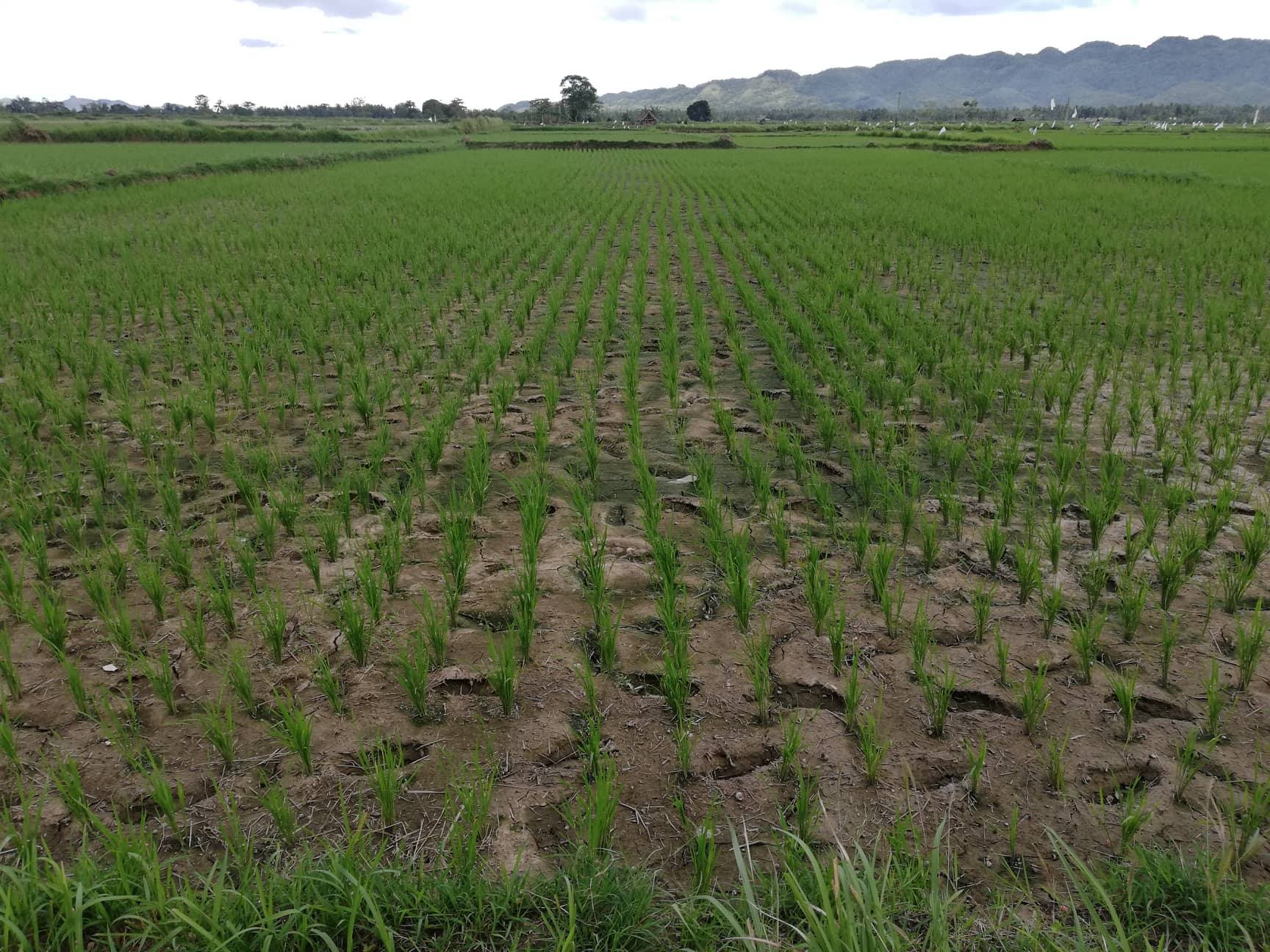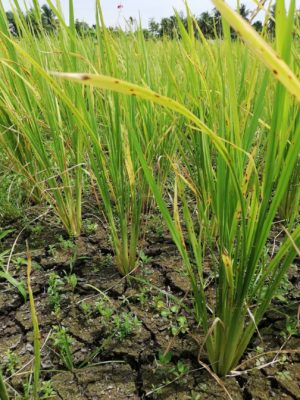Bohol farmers lament lack of rain to relieve their patched rice farms

Ricefields are drying up due to dry spell in Candijay town, Bohol, that farmers need rain to save the crops. Inquirer Visayas / Leo Udtohan
CARMEN, Bohol – Farmer Orcesio Amoy was waiting for the rains to be brought by supertyphoon “Ompong” to finally bring relief to the drought-stricken small farm near the famous Chocolate Hills.
While the storm triggered rains in some parts of the province and devastated farmlands in Northern Luzon, not a single rain dropped in Carmen.
The lack of rain caused his palay planted in a 8,000-square meter farm lot in Sitio Camanayon, Barangay Buenos to wilt.
“We were happy that rain would finally come with Typhoon “Ompong” but the downpour occurred in other towns. What we got here was just a drizzle,” said Amoy, 63.
“The drizzle failed to penetrate the soil,” he added.
Article continues after this advertisementAmoy said he had accepted that he would no longer be able to recover the P20,000 he invested in farm inputs this crop season.
Article continues after this advertisementHis rice paddies had cracked due to lack of water while the palay had turned yellow as these started to wilt.
To meet the needs of his family, Amoy had been selling watermelons which were most resistant to drought.
He was able to harvest watermelons last week from his other piece of land which he sold at P28 per kilo in a makeshift tent along the national highway going to the Chocolate Hills.
Another farmer, Temio Balocoy, 45, said his palay was also wilting but hanging on.
But if not a single rain would drop, he said he would lose his crops like Amoy.
During the previous harvest season in September last year, Balocoy said he got a decent harvest.
But this year, he was expecting to get a huge financial lost.
“The soil in our farm had cracked because of lack of water,” he said.
“If only we had a stable irrigation system, we would not have any problem with water supply during the dry spell,” he added.
Bohol is considered the rice bowl of Central Visayas.
In 2016, a state of calamity was declared in the province due to drought.
Farmlands in the towns of Corella, Calape, Loon, San Isidro, Sagbayan and Tubigon had been left unused even if these had been plowed because of the drought.
But agricultural officials said Ompong brought some rains in other parts of the province which brought relief to the parched farmlands.
The provincial agriculturist, however, said that rains was not enough.
“What we need is a long period of soaking rain to fill our dams, replenish all our waterways and moisten the soil,” he said.
Assistants provincial agriculturist Larry Pamugas said more than 47,000 hectares of rice land had dried up due to the dry spell.
Of the 47,000 hectares of rice field in Bohol, 24,000 hectares are irrigated through dams, small water catchments, and diversionary canals.

A dry spell that has persisted for months in Bohol province adversely affecting crops in many towns including Carmen which is known for the famous Chocolate Hills. The rains brought by Typhoon “Ompong” last week didn’t save the crops. Inquirer Visayas / Leo Udtohan
The rest of 23,000 hectares rely on rain.
As of this season, only 800 hectares of rice farmlands had been harvested in the towns of Lila, Bilar and some parts of Batuan in September.
“Rice plants in our rain-fed areas are not just yellowish, they are turning brown, which means there is not enough water,” he said.
Water elevations in Bohol’s four major dams were already near critical levels.
These were Bayongan Dam in San Miguel town, Malinao Dam in Pilar town, Capayas Dam in Ubay town and the Talibon Dam in Talibon town.
The sporadic rains didn’t bring up the water levels of these dams.
Pamugas said the remaining water in dams could not suffice for land preparation in next the cropping season in November.
Unfortunately, the Philippine Atmospheric Geophysical Astronomical Services Administration (Pagasa) was anticipating the El Niño phenomenon, or prolonged dry spell, toward the last quarter of 2018.
“If there is no intervention by the provincial government to produce artificial rains, farmers in most rain-fed areas in Bohol could not plant rice in the next cropping by November,” he said.
Pamugas said they planned to hold cloud seeding operations to create artificial rain and send relief to the farmlands.
In the meantime, Boholano farmers continued to wait for rain – either natural or man-made – just to save their crops.